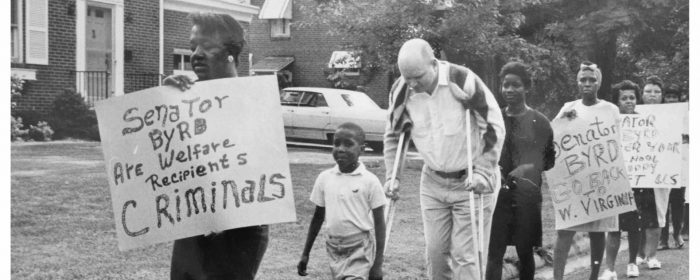The Anacostia Community Museum: 2022 in Review
Director Melanie Adams, Roger Ferguson and Annette Nazareth share highlights from the past year.

As 2022 comes to a close, the Anacostia Community Museum would like to thank the community for continuing to share your stories and supporting our work on-site, online and in the community. This past year the museum focused on issues related to housing through the development of our first online exhibit, “We Shall Not be Moved: Stories of Struggle from Barry Farm-Hillsdale” to the launch of our first augmented reality walking tour, “Before the Bulldozers: Historic Southwest DC Exposed” to our final exhibit of the year, “The Utopia Project: Inspiration for Creative Activism.“ This year the museum has expanded its offerings and its programs allow better access and opportunities for everyone to participate.
“We Shall Not Be Moved: Stories of Struggle from Barry Farm-Hillsdale” tells the story of the African American men and women who called this neighborhood home following the Civil War. In addition to telling the history, the online exhibit encourages visitors to think about why the Barry Farm-Hillsdale community no longer exists. What happened to the families and the thriving businesses that used to call the area home? Unfortunately, this story is not unique to Washington, D.C., as African American communities around the country were demolished to make room for highways, sports stadiums, and even shopping malls without little regard for the history that was being eliminated.

Continuing the narrative of disappearing African American communities, the museum launched an augmented reality walking tour “Before the Bulldozers: Historic Southwest DC Exposed.” This walking tour uses the photographs of Joseph Owen Curtis to guide visitors through what the neighborhood lost through redevelopment. Over the 1-mile walk starting at the Southwest Waterfront metro station, participants learn about the history of redevelopment and why not everyone may see it as a positive for the community.

Finally, in November we opened our last exhibit for the year, “The Utopia Project: Inspiration for Creative Activism.” This experience is more than just an exhibit because we are asking you to think about the type of world you want to live in and then each section walks you through the steps to create positive change. Throughout the experience, you learn about individuals such as Julius Hobson who told a little “fib” about a rat farm to spur action on pest control in Southeast, and Anacostia artist Yetunde Sapp who helped us remember the life and death of Breonna Taylor through her mural at Lafayette Square during Black Lives Matter protests in 2020. The experience uses the stories of DC residents, past and present, who found creative ways to advocate for change and invite visitors to do the same. This experience is an excellent activity for families and youth groups to introduce young people to changemakers in their community and show them how they can follow in their footsteps.

Thank you to everyone who supports the museum, and we look forward to seeing you in the new year.
This post was originally published Nov. 21, 2022by the Washington Informer. Reprinted with permission.
Posted: 5 January 2023







